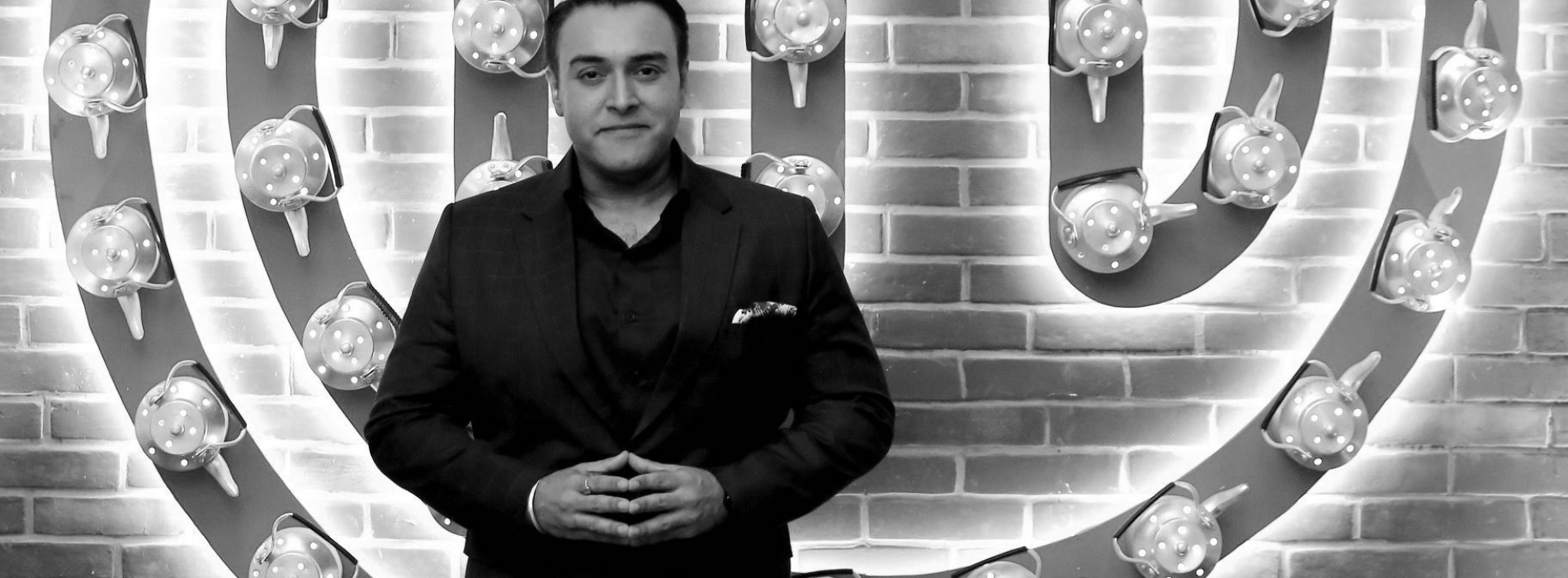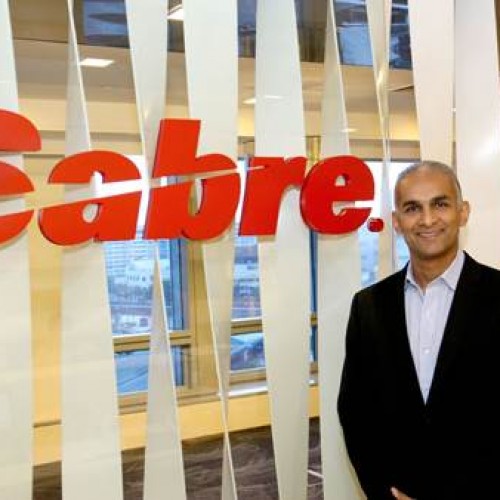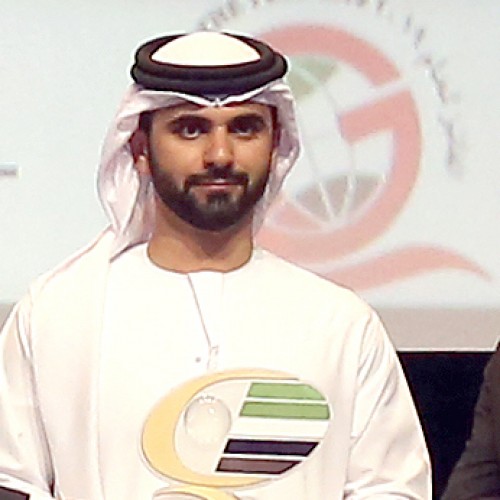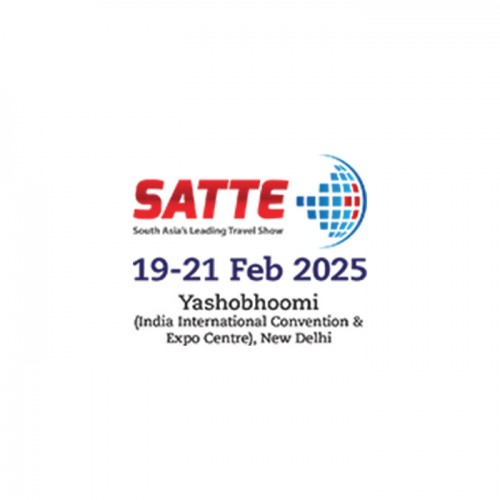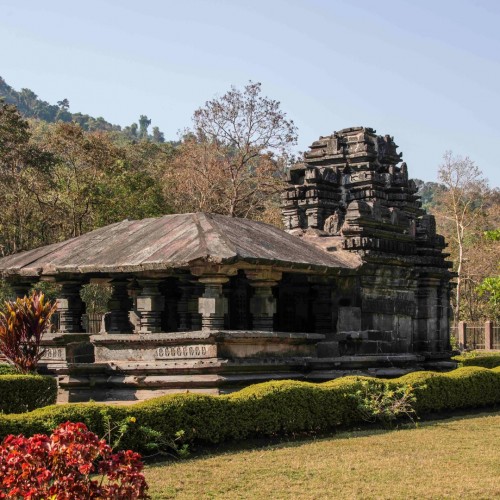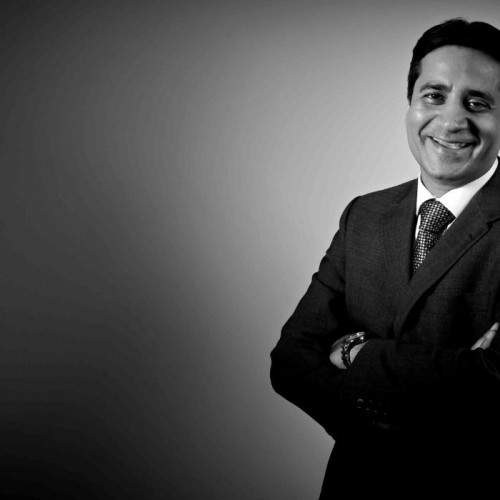Building an Empire, Surviving a Pandemic & Putting Indian Cuisine on the Map with Restauranteur Zorawar Kalra
The very beginning of Zorawar Kalra’s journey into food—whilst no doubt influenced by his father’s career as a famous food journalist and consultant—began autonomously. Today, Kalra is a name that commands respect in the Indian hospitality industry. Armed by his mission to make Indian food hip, he first founded Punjab Grill and now heads Massive Restaurants, a brand that owns and operates several trendsetting restaurants including Masala Library by Jiggs Kalra, Farzi Café, KODE, Pa Pa Ya and others.
Here, Kalra shares his story and subsequent success and also gives invaluable tips to other hospitality entrepreneurs.
Let’s start at the beginning, tell us a little bit about your childhood and how it influenced your ideas about the food business and what was possible?
I think my father and grandmother were perhaps the biggest influences in my life. But my father was number one. I grew up in a household that was very food-focused. It got us together. All of us used to meet together on the dining table. Incredible food was made multiple times a week but I started really enjoying and appreciating it when I turned 10 years old. Food suddenly started to excite me. I also found my father’s lifestyle very intriguing. He used to travel all over the country and across the world for work. I would see him develop great concepts and do research on food and even write books. I found that fascinating. Somehow, something just struck a chord with me. So probably, sometime, when I was between 10 and 12 years of age, I decided that I wanted to get into the food business.
Also, at least once in two years, my father used to take us for a trip in the summer to some part of the world. The idea was to travel to different parts of the world and try the food. I remember in 1993, I went for a trip to Scotland and Wales with my father. It was a trip along the coast. We stayed at multiple bed and breakfast facilities and experienced some amazing food. In fact, the farm-to-fork food trend that is huge these days is something I experienced way back in 1993 during my trip. Everything that we were offered from vegetables and fruits to even the meat was absolutely fresh. All the vegetables were grown in the backyard and the food was truly sublime. I think this particular trip cemented my decision to enter the food industry. I already knew that I wanted to be in the food business but it was during that trip when I was 16 years old, I realized exactly what I was going to do – set up restaurants. That’s the reason I even decided to do my MBA. When I went to Boston to do my MBA, the goal was not do get a job but to arm myself with the knowledge to be able to set up a proper business. In order to set up a restaurant, you need to have solid business acumen because it’s a very tough industry. It has one of the highest business failure rates in the world, with somewhere around 90% failure in the first year of the business. It is essential to have a solid foundation on which you base your venture. So I started this way.
So it wasn’t that your father expected you to do this. It was all your own decision?
Actually, he did not want me to do this because he was a consultant and a food journalist, not a businessman as such. He used to come up with great ideas and develop these ideas but for others, particularly hotels. I found that a little against my grain or my way of thinking; I wanted to build concepts that we could take ahead ourselves. However, I was definitely shaped by my father‘s experiences and lifestyle. As a food journalist, he wrote a lot of books and did a lot of research for these books. In a sense, he was a renaissance man who wanted to bring around renaissance in Indian food and he was very successful in doing that. I would read his research and his books and was influenced by them. Although he did not want me to go into the restaurant business as such, he was always open-minded. He never came in my way but I don’t think he ever expected me to go into this business the way I did.
What was the first project you worked on that was completely your own?
The first restaurant I opened was Punjab Grill, in 2007, which is now a big chain. It started out, as a food court outlet in Gurgaon and that became a brand that we evolved further. Ultimately we closed down all the Punjab Grill outlets in the food courts and we converted them into the new avatar that you see nowadays – a fine dining restaurant. Actually, I ventured into the food business even before that. I think it was 2006 when I started a brand called Parantha Company which was a small cart-based system where the idea was to build thousands of carts across the country to serve only one product: ‘Galouti Kabab’ with ‘Ulte Tave Ka Paratha’. Eventually, I found that using my dad’s name would not be appropriate for the cart system. Moreover, quality control issues were becoming huge. So I decided to shut that business and entirely focus on the food court and restaurant business.
What was that experience like? What was the biggest challenge you faced?
The biggest challenge with any new business is obviously the fact that you are always worried about getting customers. You put your heart and soul, everybody does. Everybody who opens a restaurant puts a lot of effort into it, does lots of planning and lots of other background activities. It might look calm on the outside, but lots of tinkering, lots of systems and processes are going on in the back. I still remember the first day I opened my restaurant. We had a launch party on Saturday and we were to open on Monday. I think it was in June 2007. We shut the restaurant on Sunday for preparation and opened on Monday. From Monday to Wednesday we had a lukewarm response. Although the response from the people that were coming was good, not too many people were coming. The mall was not that known, but of course, Jiggs Kalra was very well known. So we were still decently busy for the first three days but it was not as busy as we expected. However, the moment Friday came, the very first Friday, the fifth day of the launch, we suddenly got overwhelmed. I think the word of mouth spread. Remember, in 2007 there was no social media, no Facebook, no Instagram; people just went by word of mouth. I remember that Friday, we were so overwhelmed that I think 30-40 % of our customers went back without even paying because we did not have the manpower or systems to give bills on time. Customers were so fed up with waiting for the bill that they just walked out. We were okay with giving free food because we did not want to spoil our reputation by giving bad service. Luckily, people really loved the food they did not complain about hiccups and service issues. We even ran out of cloth napkins so we started giving tissue papers. That was very embarrassing for a Jiggs Kalara restaurant, so in that sense, the first Friday was a nightmare but it was also exciting. I still remember Friday onwards we literally could not sleep; we tried to get everything organized for the weekend. We still couldn’t serve napkins on Saturday because we had run out of them, but Sunday onwards or even from Saturday evening things started becoming a lot more streamlined. All in all, it was very exhilarating.
I think our restaurants always followed the basic principle of serving great food with good service. I believe there is no golden rule of running a restaurant apart from the fact that guests should be served great food in a hygienic manner, with a smile. I think that goes a long way.
That sounds really rewarding. I think an amazing part of running a restaurant is that you get feedback directly and immediately from the customers.
Correct. You are also getting judged every day. Everyone is a critic. It comes with the territory and you have to understand if you are going into this business you need to have very tough skin. You will have to absorb all the criticism and all the online crap, even if it is incorrect. But that’s okay. That’s part of the business.
Around 2015, when Zomato initially became a big and popular search and discovery platform, I used to be obsessed with it. For the first year and a half, I used to open Zomato ten times a day to see reviews and what was happening. If I saw a bad review I would get upset; it became an obsessive and vicious circle. Finally, I realized you have to develop tough skin and now for the last five years I have not opened Zomato.
But to keep in touch with my customers, I still need to read feedback about my restaurants. I make it a point to read the feedback forms that we collect every day from our restaurants. Before the lockdown, I used to get about 25 emails from all the various restaurants with the details about how many customers gave outstanding feedback, how many gave excellent, how many good, how many averages and so on.
What do you think has been your biggest success when it comes to people responding to your food?
I think that our biggest success is that we made Indian food ‘cool’. I think Farzi Café started the trend of having cool Indian food for the youth. India is a very young country and youth is an intrinsic demographic that every restaurant needs to cater to. Before Farzi Café, Indian food was restricted to fine dining or restricted to being the go-to option for your grandparent’s anniversary, your parents’ birthdays or a family outing. You would not take your date to an Indian restaurant. You would not go hang out with your friends at an Indian restaurant. Indian food, like ‘dal makhani’, ‘butter chicken’, etc. were delicious but boring. There was no playfulness and no youth-oriented facets to it.
With Farzi Café, the whole goal was to make Indian food cool and hip. We introduced a sense of fun at the restaurant. We made sure the atmosphere was lively. We had good music and incredible cocktails along with very quirky and cool yet familiar food. Today, Farzi Café is present in seven countries and we are very proud of the growth of the brand. Our brand has stood for only one thing, that is innovation and spreading the love for Indian food across the country and now of course across the world. But like I mentioned, the primary goal was pretty humble and that is to make Indian food cool amongst the Indian youth. I think we have been successful in doing that. We have ended up creating a genre that is the most popular in the whole industry now – Modern Indian. Today, Modern Indian cuisine is not just a trend, it is a phenomenon; a worldwide phenomenon. At least at our price point or rather for the causal diner scenario, we are the innovator or first ones to introduce this genre.
You have managed to start a number of successful casual and fine dining joints, won multiple awards and more recently even taken your brand international. Are there any insights you can offer to someone just starting out in the business?
Yes, my first advice to anyone will be to not open a restaurant for the next one year. There might be a bloodbath because you don’t know how people are going to respond after the pandemic. We have seven restaurants under construction at the moment. We are putting all of them on hold. We might not even open some of them, even though we have invested money in them and they are half-ready.
In the current situation, I will say one should not open any restaurant in the entire financial year, we should write off 2020. Till March 2021, you just try to survive. The reason I say this is because you don’t know how things are going to turn out. I would rather suggest one should focus on smaller units that are delivery- based, with low rent and low cost because the moment you get into a high-risk situation with so much uncertainty around the horizon, you wouldn’t know what you need to do and you might end up losing everything. Of course, if you see in the next six months that people are returning to restaurants, malls, cafes and cinema halls in droves, then please go ahead with your plans. But at this moment, you are a lucky man if you have not put your money in the restaurant business. Stay away from it. Cash is king at the moment.
Also, in general, I think it is very important for budding restaurateurs to understand that it is a tough business and not a glamorous one; it looks glamorous only on the outside. I will use the analogy of ducks. The duck looks very comfortable and very relaxed when you see it swimming but you don’t know how fast it is paddling underwater. So even though it looks extremely relaxed on the surface, it needs to do a lot of work behind the scene. That is the same thing that happens with the restaurant industry. It looks very exciting, very glamorous but lots of effort and hard work is needed behind the scene. It is a very risky business in which failure rates are very high. There are very low barriers to the entry into the business, anybody can open a restaurant but only a few can run and survive. You must have the right reasons to enter this business. Don’t enter the industry for frivolous reasons. I am not joking, some people enter the business simply because they are getting married and want to show their future father-in-law that they are doing something. That is not the right reason to go into it. You should go into it because you are passionate about it.
So how will you approach the launch of each of your restaurants moving forward? Do you have any advice on planning and budgets?
All my future restaurants are going to be built on a lower budget. We are not going to spend too much per restaurant. Secondly, we are going to do a lot of workflow analysis and process-based work to ensure there is no undue cost associated with the restaurant. This also means that manpower requirements for every restaurant will reduce because when there is uncertainty, the first thing people do is let people off. So rather than letting people off, it is better that you don’t hire them to begin with. It is better to run a lean operation, make sure that every P&L item is looked at and avoid unnecessary capital expenditure. Try to build a restaurant at the lowest cost and do not go for high risks spaces to open restaurants, only go for sure shot locations. The unfortunate part is that sometimes sure-shot locations come with a heavy rent, but I would still suggest that within the category of sure-shot restaurants, it is better to open restaurants at A- or B+ kind of locations than to go for A++ location and end up paying rent which you might not be able to recover. This is a time for caution. As Jack Ma recently said, forget about expansion plans and forget about growth, 2020 and 2021 are just years to survive. If you are able to survive, then you will live to fight another day and to execute your plans in the future. But if you don’t survive for the next one year, then you are in trouble. So again my advice would be to control your capital expenditure, go for low-risk business models and control every P&L item. Make sure that there is no unnecessary cost and especially keep your fixed costs under control.
I think my other advice to all budding restaurateurs or entrepreneurs of any age in the post COVID era is to be patient and not jump in. Be a little more risk-averse. Don’t be a cowboy. The cowboy days of doing business are gone. I am also a maverick. I am also a risk-taker. Usually, when chips are against me, I take even bigger risks. But I have to change my own way of thinking. I am going to be more risk-averse. I am going to make sure that I am thinking ten times before making a capital expenditure.
You see a human being and an entrepreneur does business on the basis of hope, on the basis of the projection of future or that kind of stuff. If the future starts looking gloomy and unsettled, then you have to reassess your entire business model. So I think a lot of us will have to undergo lots of changes in our existing model. We will have to be more patient, more risk-averse and more economical. That is my advice to all entrepreneurs.
I think COVID has really made us all think, not only about business models but about what is important in life. So, do you feel the need or desire to give back through your work now?
Yes, absolutely. We have been doing lots of charity since the lockdown. We have served meals to about one lakh people ourselves, just from Massive Restaurants. Further, as part of NRAI’s ‘Feed The Needy Campaign’, with which I have been very closely involved, we have fed more than 55 lakh people as of today. I was inspired by the whole ‘langar’ concept of Gurdwaras. Feeding people at this time is perhaps the most important thing, especially migrant labour. I remember, two-three days after the lockdown, I was going on a medicine run for my mother and on the Gurgaon – Faridabad road I saw thousands of migrant workers walking. They were walking with kids, with their entire luggage in their hands, with all their belongings on this 200-km journey. They were trying to get to the border of UP. I am sure a lot of them were not even allowed to pass through. That struck a chord with me. I realized that these guys have nothing. They have no jobs, no money; they don’t even know how far they can go. On top of that, they are starving. In that moment I just felt compelled to start this whole feeding campaign. We first started off at the Massive Restaurant level and then it became a much larger thing. 37 kitchens in 6 cities across the country became involved. We made a lot of effort towards feeding the people who needed it the most. It started off with migrant labour but it went on to anyone who didn’t have access to food. I truly believe in this day and age, in 2020, nobody should go hungry. These are our countrymen and women who really need our help. I think what this lockdown has really taught us, is that everything is so pointless unless there is a greater cause attached to it. What is the point in having this business when there is no hope, what is the point of having cars when you can’t give back to your society? If you can help some people, I think that makes you happier than anything else. In a way, it’s a selfish move because when you do charity it makes you feel good about yourself. So it’s helping you from that perspective as well.
Even after this pandemic is behind us, we are going to institutionalize the process of feeding children at all our restaurants. We are still coming up with the name for this prerogative but it is essentially going to be a system where kids in the vicinity of our restaurants are going to be fed. We haven’t worked out the details of the initiative but we will provide food to needy children at orphanages, schools or clusters around our outlets. We are going to start doing this as a standard process as a part of our CSR activities.
We are so happy to learn of your initiatives. The work you are doing is admirable. Now for our last question, have you thought about the kind of legacy you would like to leave?
I think our main goal, both my father’s and mine, has always been to put Indian food on the global palate. So one legacy I would like to leave behind is that by the time all this is done and dusted and I have moved on, Indian food will be considered as a tour de force across the culinary world. I want a person to go to any major city in the world and in his top three dining destination options; one should be an Indian restaurant. I think if we can achieve this, it will be the ultimate legacy of all. We have the greatest cuisine in the world. We have the most culinary depth, we have a variety that is unparalleled and we have a sophistication that is absolutely unmatched, but we have a bad marketing problem. We have not been able to open really good restaurants across the world. And that’s what my personal goal is with Farzi Café and Masala Library. This is the legacy I would like to leave behind, either through me or through others – Indian cuisine should be in the spotlight on the global culinary stage.
You might also like
Sabre elevates Roshan Mendis to Chief Commercial Officer for Travel Network
Sabre Corporation has appointed Roshan Mendis as chief commercial officer (CCO) of its Travel Network business. As CCO, Mendis will be responsible for leading global sales, sales operations and business
VFS Global wins the coveted Dubai Quality Global Award (DQGA)
VFS Global has won the coveted Dubai Quality Global Award (DQGA). It also received 5 Star Rating in the Emirates Business Rating Scheme (EBRS). VFS Global is the first and
SATTE launches “+1″ Campaign, announces major partnerships & events for 2025 edition
SATTE 2025 will take place from February 19-21, 2025, at Yashobhoomi, New Delhi. This year’s event will host over 2,000 exhibitors and attract more than 40,000 visitors from across the

